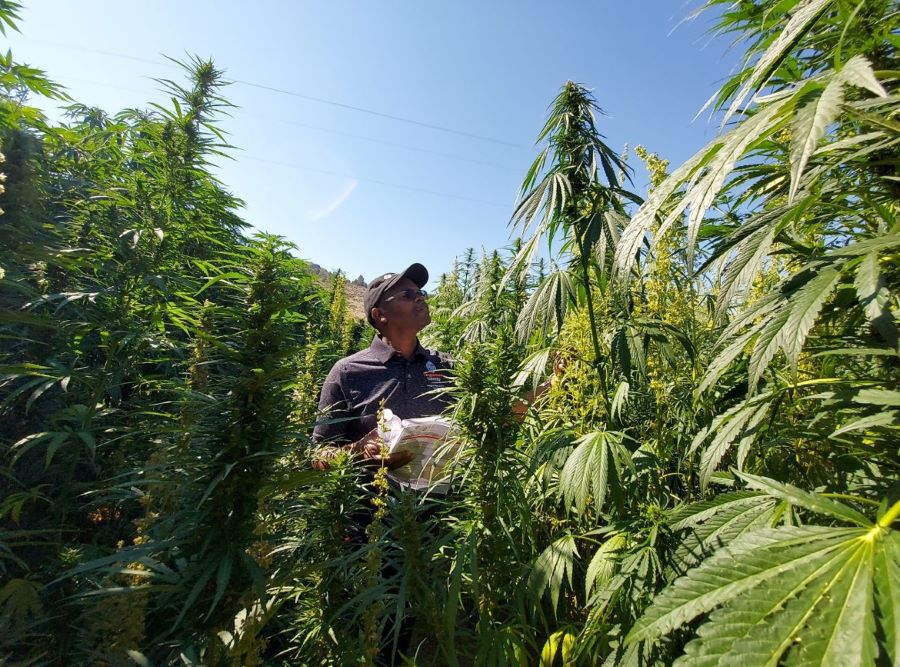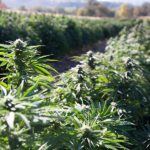The school will partner with 13 Native American tribes to develop manufacturing capabilities for the material.
Oregon State University’s Global Hemp Innovation Center has received a $10 million grant from the U.S. Department of Agriculture to partner with 13 Native American tribes in the western United States, five other universities — and numerous other private and public sector entities— to develop manufacturing capabilities for industrial materials derived from hemp.
Jeffrey Steiner, director of the Global Hemp Innovation Center, tells Oregon Business the goal of the new consortium is to develop the infrastructure for industrial uses of hemp, build out the tribal hemp-based workforce and to bring regional hemp production, processing, and manufacturing together to create supply chains based on the needs identified by an intertribal business consortium.
He also emphasized that the work will be led by tribes.
“The tribal representatives we’ve engaged with, they’re just pumped, because this is really going to be a tribe-led business development consortium. It’s us facilitating and them leading it,” says Steiner, who says the center is partnering with tribal groups in part because of how effective they can be in quickly building up capacities. “Tribes are independent nations, and a reservation can be a free trade zone. They can totally sidestep U.S. import tariffs. They can purchase equipment or established infrastructure for processing at 20% lower than anybody else can. They also can be pretty nimble building out infrastructure projects because they don’t have to necessarily be tied to the flow of how states regulate things. They can still have just as sustainable and just as safe facilities, but they can be very quick about how they go through their approval process to do that.”
The center’s work builds on previous grant funding and research, including a $10 million USDA Sustainable Agricultural Systems grant the Global Hemp Innovation Center received in 2021 to begin defining economic opportunities for hemp grown in the western United States.
Steiner says that the hemp boom in Oregon following the 2018 Farm Bill legalizing the plant nationwide has dried up following an initial rush to grow hemp for CBD products.
“In 2018 and 2019 the CBD market just took off. There were over 60,000 acres in Oregon, and then by 2021, it just absolutely crashed,” Steiner says. He says the center’s new goals center around growing the economy for materials derived from hemp to be used in industrial applications, like construction and developing a zero-waste processing system for the versatile plant.
“Look at the cotton industry now. They harvest the cotton out of the boll, which goes to a gin that separates it in high throughput, ready to go into textiles. But all the other short fiber, the seed, they crush it to get the vegetable oil out of it. They take the crushes themselves and put them in livestock feed. There’s no waste out of it. It’s the same way with the soybean industry,” Steiner says. “The amount of hemp fiber that can go into textiles is only about 10% of plant at the most. It’s what you do the other 80%-90% of plant that is what we’re really focusing on, so that there is high throughput processing system and no waste.”
The project also focuses on creating educational and workforce development opportunities to equip Native American students and adults for jobs in the sector, develop grading standards for industrial hemp, configure manufacturing equipment and facilities, and get needed technology providers to establish manufacturing pipelines for hemp-based materials and products that meet end-product market specifications.
Steiner says the work of the tribal communities can serve as a blueprint for other rural areas to develop industrial hemp-based manufacturing practices.
“We built this project so that we can parlay it out and help bring in additional resources. We can help the tribes themselves start addressing issues of housing on reservations, and talk about establishing biobased manufacturing on other reservations and in other rural communities,” Steiner says. “We’re addressing major issues like economic development and safe, affordable, and healthy housing in rural areas. The tribes are a good focus point, but it’s for all rural areas.”





